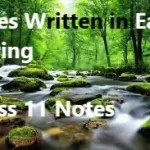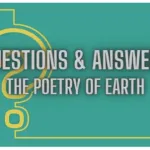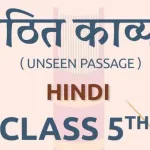Explore the comprehensive set of questions and answers from the 2018 annual exam across various subjects. This detailed guide covers all major subjects with clear, easy-to-understand explanations for each question to support students in revising and grasping important concepts effectively.
2018 Annual Exam Question Paper – English
Question: What is the main theme of the poem “Daffodils” by William Wordsworth?
Answer: The main theme is the beauty of nature and its power to uplift the human spirit.
Question: Write a letter to your friend inviting them to your birthday party.
Answer: Start with a warm greeting, mention the date, time, and venue of the party, and conclude by expressing your excitement about their presence.
Question: Define a noun and provide two examples.
Answer: A noun is a word that represents a person, place, thing, or idea. Examples: dog, happiness.
Question: Explain the difference between simile and metaphor.
Answer: A simile uses “like” or “as” to compare, while a metaphor directly states one thing is another.
Question: What is the significance of Shakespeare’s “Hamlet”?
Answer: It explores themes of revenge, morality, and the complexity of human emotions.
Question: Write a summary of the short story “The Last Leaf” by O. Henry.
Answer: It tells the story of a young girl who regains her will to live after seeing a persistent leaf, symbolizing hope and resilience.
Question: Identify the verb in the sentence: “She runs every morning.”
Answer: The verb is “runs.”
Question: What are the primary characteristics of a sonnet?
Answer: Sonnets are 14-line poems, usually written in iambic pentameter, with a specific rhyme scheme.
Question: Write a short paragraph describing your favorite book.
Answer: Include the title, author, a brief plot summary, and reasons why it is your favorite.
Question: Differentiate between active and passive voice with examples.
Answer: Active voice: The subject performs the action (e.g., “She sings a song”). Passive voice: The action is received by the subject (e.g., “A song is sung by her”).
Question: What is the role of imagery in poetry?
Answer: Imagery uses descriptive language to create vivid pictures in the reader’s mind, enhancing the sensory experience of the poem.
Question: Write a note on “The Road Not Taken” by Robert Frost.
Answer: It reflects on choices and their impact, symbolizing life’s uncertain paths.
Question: How do you write a persuasive essay?
Answer: Start with a clear thesis, support it with evidence, and conclude with a strong argument.
Question: What are conjunctions? Provide examples.
Answer: Conjunctions are words that connect clauses or sentences. Examples: and, but, or.
Question: Write a dialogue between two friends about their weekend plans.
Answer: Create a casual conversation where both friends share ideas and finalize plans.
Question: What is personification? Provide an example.
Answer: Personification gives human traits to non-human things. Example: “The wind whispered through the trees.”
Question: Discuss the importance of punctuation in writing.
Answer: Punctuation clarifies meaning, indicates pauses, and organizes sentences effectively.
Question: Explain the structure of a formal letter.
Answer: It includes the sender’s address, date, recipient’s address, salutation, body, closing, and signature.
Question: What is a haiku? Provide an example.
Answer: A haiku is a three-line Japanese poem with a 5-7-5 syllable structure, often about nature.
2018 Annual Exam Question Paper – Mathematics
Question: Solve 2x + 5 = 15.
Answer: x = 5.
Question: Find the area of a circle with a radius of 7 cm.
Answer: Area = π × r² = 154 cm².
Question: What is the formula for the perimeter of a rectangle?
Answer: Perimeter = 2(length + width).
Question: If a triangle has sides of 3 cm, 4 cm, and 5 cm, is it a right triangle?
Answer: Yes, because 3² + 4² = 5².
Question: Simplify (3x² – 5x + 2) – (x² – 2x – 4).
Answer: 2x² – 3x + 6.
Question: Solve for y: 3y + 7 = 19.
Answer: y = 4.
Question: Calculate the slope of a line passing through points (1, 2) and (3, 6).
Answer: Slope = (6 – 2) / (3 – 1) = 2.
Question: What is the sum of angles in a quadrilateral?
Answer: 360 degrees.
Question: Convert 0.75 into a fraction.
Answer: 3/4.
Question: Solve 4x – 9 = 15.
Answer: x = 6.
Question: What is the formula for the volume of a sphere?
Answer: Volume = 4/3 × π × r³.
Question: Define an isosceles triangle.
Answer: A triangle with two equal sides.
Question: What is the Pythagorean theorem?
Answer: In a right triangle, a² + b² = c², where c is the hypotenuse.
Question: Solve for x: 5x – 3 = 2x + 9.
Answer: x = 4.
Question: Multiply: (2x + 3)(x – 4).
Answer: 2x² – 5x – 12.
Question: Divide 36 by 6.
Answer: 6.
Question: Find the LCM of 12 and 15.
Answer: 60.
Question: What is the value of √49?
Answer: 7.
Question: Simplify: (3x + 2)².
Answer: 9x² + 12x + 4.
The 2018 annual exam questions and answers provided here are a valuable resource for reviewing essential topics in each subject. By practicing these questions, students can enhance their understanding, improve problem-solving skills, and prepare effectively for future assessments.
Latest Posts
- Step-by-step guide to download and apply for jee mains admit card 202
- Comprehensive 2025 government holidays and recruitment details for job seekers
- JEE Mains Admit Card 2025: Your Step-by-Step Guide to Downloading the Hall Ticket
- Everything You Need to Know About 2025 Government Holidays Recruitment
- Comprehensive Guide to rrb d group recruitment 2025 – Eligibility, Vacancies, and Application
- Detailed guide to nps trust recruitment 2025 vacancies, eligibility and apply process
- Comprehensive guide to hpcl recruitment 2025 notification, vacancies, and application process
- ignou bed admission 2025 complete recruitment guide with eligibility and process
- Comprehensive Guide to Indian Army Agniveer Recruitment 2025 Notification and Jobs
- Everything You Must Know About CBSE Board Exams 2025 Changes & New Rules




